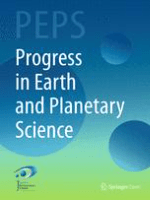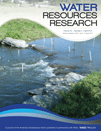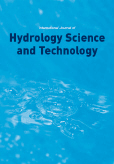
Frontiers in Earth Science
Scope & Guideline
Advancing Knowledge for a Sustainable Planet
Introduction
Aims and Scopes
- Geological Processes and Tectonics:
Research covering the geological processes that shape the Earth's structure, including tectonic movements, seismic activities, and their effects on the environment. - Hydrology and Water Resources:
Studies on hydrological cycles, groundwater dynamics, and the impact of climate change on water resources, including the assessment of water quality and management strategies. - Geochemical and Petrophysical Analysis:
Investigations into the geochemical properties of rocks and sediments, including organic geochemistry, mineralogy, and the implications for hydrocarbon reservoirs. - Natural Hazards and Risk Assessment:
Research focused on understanding and mitigating risks associated with natural hazards such as earthquakes, landslides, and floods, including predictive modeling and early warning systems. - Climate Change and Environmental Dynamics:
Exploration of the impacts of climate change on geological processes, ecosystems, and human activities, including studies on paleoclimate and current environmental changes. - Remote Sensing and Geospatial Analysis:
Utilization of remote sensing technologies and geographic information systems (GIS) for environmental monitoring, resource management, and hazard assessment.
Trending and Emerging
- Machine Learning and Data Science Applications:
The integration of machine learning techniques in analyzing geological data, predicting geological phenomena, and optimizing resource management is rapidly gaining popularity. - Climate Change Adaptation Strategies:
Research focusing on adaptation strategies for mitigating the impacts of climate change on geological and hydrological systems is increasingly prominent. - Geothermal Energy Exploration:
There is a growing interest in geothermal energy as a sustainable resource, with studies focusing on the exploration and characterization of geothermal systems. - Carbon Capture and Storage (CCS):
Research on CCS technologies and their implications for reducing greenhouse gas emissions from geological formations is becoming a key focus area. - Community-Based Disaster Risk Management:
The trend towards involving local communities in disaster risk management and resilience building is emerging as a vital area of research. - Advanced Geophysical Inversion Techniques:
Innovative geophysical inversion methods that enhance subsurface imaging and characterization are trending, reflecting the need for more accurate geological models.
Declining or Waning
- Traditional Geological Mapping:
The emphasis on conventional geological mapping techniques is diminishing as more advanced remote sensing and geospatial analysis methods become prevalent. - Static Risk Assessment Models:
There is a noticeable decline in the publication of static models for assessing geohazards, as researchers increasingly adopt dynamic, data-driven approaches that incorporate real-time data. - Single-Discipline Studies:
Research that focuses solely on a single discipline within earth sciences is becoming less common, with a trend towards interdisciplinary studies that integrate multiple scientific approaches. - Basic Geophysical Measurements:
The frequency of studies relying on basic geophysical measurement techniques is declining as more sophisticated and automated methods gain traction in the field.
Similar Journals

Journal of Earth System Science
Bridging Knowledge Gaps in GeoscienceThe Journal of Earth System Science, published by Indian Academy of Sciences, is a pivotal resource in the field of Earth and Planetary Sciences, boasting an impressive Q2 ranking in 2023. Since its inception in 2005, this journal has been dedicated to advancing our understanding of complex Earth systems, publishing high-quality research that spans across various disciplines within the geosciences. With an E-ISSN of 0973-774X and a commitment to Open Access, it makes cutting-edge scientific insights widely available to researchers and professionals alike. The journal serves as a vital platform for innovative research and critical discussions, making significant contributions to the global scientific community, particularly as we navigate the challenges posed by climate change and environmental sustainability. Located in Bangalore, India, it continues to foster international collaboration and discourse among scholars, reinforcing its role as an essential publication within the Earth and Planetary Sciences domain.

Frontiers of Earth Science
Elevating Earth Science Research to New HeightsFrontiers of Earth Science is a prominent academic journal in the field of Earth and Planetary Sciences, published by Springer. With an ISSN of 2095-0195 and an E-ISSN of 2095-0209, this journal serves as a significant platform for researchers and professionals to disseminate their findings from 2007 to 2024. It is recognized for its impactful contributions within the category of Earth and Planetary Sciences, boasting a respected Q2 ranking in 2023. With a Scopus ranking of 64 out of 195, placing it in the 67th percentile, Frontiers of Earth Science continues to drive academic dialogue and innovation. The journal is dedicated to exploring a diverse range of topics, including geology, meteorology, and environmental science, and amplifying the understanding of Earth systems through rigorous research. Located in New York, USA, this journal embraces an Open Access model, ensuring that groundbreaking research is readily available to the global scientific community, thereby enhancing its accessibility and impact.

Progress in Earth and Planetary Science
Connecting researchers for a sustainable planetary future.Progress in Earth and Planetary Science is a premier open-access journal published by Springer, dedicated to advancing the field of Earth and planetary sciences. Since its inception in 2014, this journal has emerged as a prominent platform, achieving a Q1 ranking in the Earth and Planetary Sciences category, reflecting its high impact and rigorous peer-review process that ensures the highest quality of published research. With its broad scope encompassing diverse subfields within the Earth sciences, the journal aims to foster interdisciplinary collaboration and innovation among researchers, professionals, and students. The journal's commitment to accessibility through its open access model promotes the dissemination of knowledge globally, allowing critical research findings to be shared widely within the scientific community. Located in the United Kingdom, Progress in Earth and Planetary Science continues to play an essential role in shaping the future of Earth and planetary research from 2014 to 2024 and beyond.

WATER RESOURCES RESEARCH
Advancing the Science of Water ManagementWATER RESOURCES RESEARCH, published by the American Geophysical Union, stands as a premier journal in the field of environmental science, specifically within the domain of water science and technology. With an impressive impact factor and a categorical ranking of Q1 for 2023, it ranks within the top 10% of relevant journals, evidencing its critical role in advancing the knowledge and application of water resources research. Since its inception in 1965, the journal has been dedicated to rigorous research that addresses pressing global challenges related to water resource management, hydrology, and environmental sustainability. The journal's comprehensive publication scope aims to present innovative findings and methodologies that can shape effective policies and practices. Although it does not offer open access, the robust research it publishes continues to influence academics and practitioners alike, ensuring its position as an essential resource for anyone engaged in the pursuit of water-related knowledge and solutions.

Vestnik of Saint Petersburg University Earth Sciences
Connecting Ideas for Environmental StewardshipVestnik of Saint Petersburg University Earth Sciences, published by ST PETERSBURG UNIV PRESS, serves as a pivotal platform for the dissemination of innovative research within the fields of Earth Sciences, Environmental Science, Geography, and Geology. This journal, with an ISSN of 2541-9668 and an E-ISSN of 2587-585X, aims to foster scholarly communication and facilitate advancements in understanding the diverse and complex interactions within our planet's systems. Operating from the Russian Federation, the journal is unique in its commitment to an open-access model, making critical research accessible to a global audience of researchers, professionals, and students. Although currently classified in the Q4 quartile in several relevant categories, its ranking showcases the potential for growth and increased impact within the academic community. Aiming to converge ideas and findings from 2017 to 2024, the Vestnik of Saint Petersburg University Earth Sciences is dedicated to enriching the dialogue and supporting collaborative research efforts in disciplines crucial for sustainable development and environmental stewardship.

DOKLADY EARTH SCIENCES
Innovating Research in Earth Sciences Since 1998DOKLADY EARTH SCIENCES is a reputable journal published by MAIK NAUKA/INTERPERIODICA/SPRINGER, focusing on the dynamic field of Earth and Planetary Sciences. With an ISSN of 1028-334X and E-ISSN 1531-8354, this journal offers a platform for researchers to disseminate their findings and insights that contribute to our understanding of Earth systems over a continuous publishing span from 1998 to 2024. It currently holds a Q3 quartile ranking in the Earth and Planetary Sciences category, reflecting an emerging yet significant impact within its field, evidenced by its Scopus ranks where it stands at 123rd in general Earth sciences and 113th in miscellaneous Earth sciences. DOKLADY EARTH SCIENCES aims to bridge research gaps and foster collaboration among a diverse audience including researchers, professionals, and students committed to advancing knowledge in geoscience. The journal stands as a vital resource for those seeking to explore contemporary challenges and innovations within the realm of Earth sciences.

Geofizicheskiy Zhurnal-Geophysical Journal
Pioneering Knowledge in Seismic Studies and BeyondGeofizicheskiy Zhurnal-Geophysical Journal, published by the esteemed S I Subbotin Institute of Geophysics, National Academy of Sciences of Ukraine, stands as a vital resource for professionals and researchers in the field of geophysics. With an ISSN of 0203-3100 and an E-ISSN of 2524-1052, this journal is recognized for its rigorous peer-reviewed articles that delve into various aspects of geophysical research, including seismic studies, geodynamics, and Earth surface processes. Although currently not under an open access model, the journal maintains a commitment to disseminating high-quality research, thereby enriching the global geophysical community. The publication aims to foster collaboration and knowledge transfer among scientists and engineers while addressing complex geophysical challenges in a rapidly evolving landscape. By engaging with cutting-edge research, readers can expect to uncover insights that advance both theoretical understanding and practical applications in geophysical science.

Journal of Geology Geography and Geoecology
Bridging Disciplines to Tackle Environmental Challenges.The Journal of Geology Geography and Geoecology, published by OLES GONCHAR DNIPRO NATIONAL UNIVERSITY, is a premier open-access platform dedicated to advancing the fields of geology, geography, and geoecology. With its ISSN 2617-2909 and E-ISSN 2617-2119, this journal seeks to disseminate high-quality research, fostering collaboration and innovation among researchers, professionals, and students alike. The journal embraces a diverse range of topics, from earth sciences and ecological studies to geographical methodologies, providing a comprehensive perspective on how these disciplines interconnect. It aims to support impactful scholarly communication, thereby addressing some of the most pressing environmental challenges of our time. Authors and readers will find a committed editorial team that values rigorous peer-review processes and encourages the rapid sharing of scientific knowledge, all while maintaining a commitment to open access principles. This makes the Journal of Geology Geography and Geoecology an essential resource for anyone invested in understanding the complex dynamics of our planet.

International Journal of Hydrology Science and Technology
Shaping the Future of Hydrology with Cutting-edge ResearchThe International Journal of Hydrology Science and Technology, published by InderScience Enterprises Ltd, is a distinguished platform dedicated to advancing knowledge in the field of hydrology, environmental engineering, and water science. With an ISSN of 2042-7808 and an E-ISSN of 2042-7816, this journal, established in 2011 and continuing through 2024, serves as an essential resource for researchers, professionals, and students alike. Despite being categorized in the Q3 quartile across multiple disciplines including Earth and Planetary Sciences, Environmental Engineering, Waste Management and Disposal, and Water Science and Technology, the journal maintains a reputation for contributing significant findings that impact both theory and practical applications in addressing hydrological challenges. Currently unavailable through Open Access options, the journal remains committed to disseminating valuable research that informs sustainable practices in water resource management. The editorial team encourages submissions that explore innovative strategies and methodologies while fostering interdisciplinary discussions, making this journal a pivotal player in shaping the future of hydrological science.

Environmental Earth Sciences
Championing open access to elevate Earth Science scholarship.Environmental Earth Sciences is a prestigious journal published by Springer, dedicated to advancing knowledge in the multifaceted fields of Earth Sciences, including Earth-Surface Processes, Environmental Chemistry, Geology, and Soil Science. With an ISSN of 1866-6280 and an E-ISSN of 1866-6299, this journal occupies a notable position in the academic landscape, consistently ranked in the Q2 category across multiple disciplines in 2023. It supports open access to foster wider dissemination of impactful research, enhancing visibility and accessibility for authors and readers alike. The journal's ongoing commitment to publishing innovative studies and reviews makes it an essential resource for researchers, professionals, and students alike. With a strong focus on addressing contemporary environmental challenges, Environmental Earth Sciences invites contributions that are both original and interdisciplinary, making a significant impact in understanding Earth dynamics and sustainability.